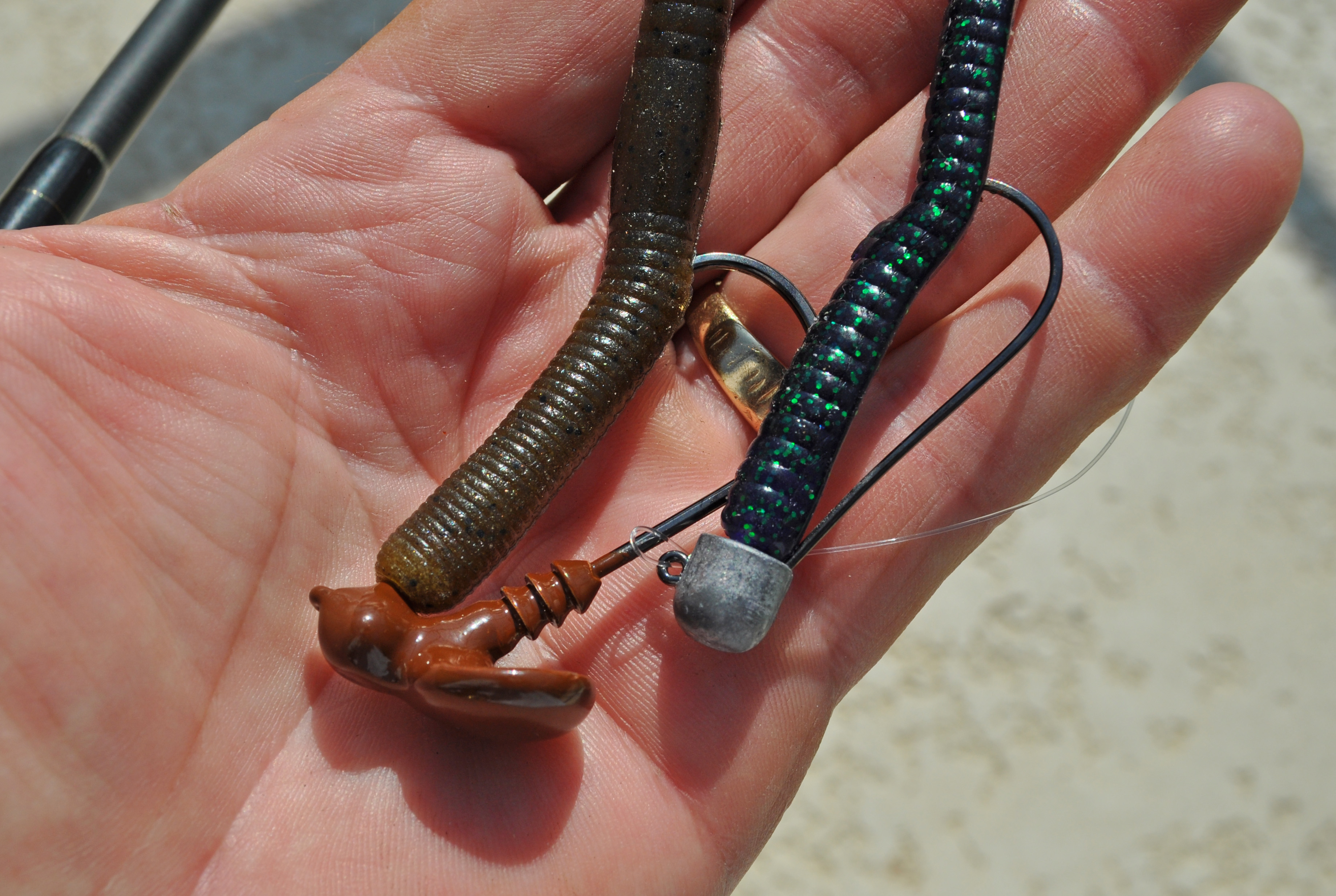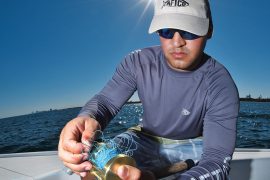Fish a shaky head worm for fussy bass on the bottom.

Two purpose-built jigs for the shaky head technique, the Mega Strike Shak-E2 (left) and the Gambler Giggy Head.
The shaky head, essentially a Texas-rigged worm-and-jighead combo, is pure dynamite on bass oriented to the bottom, in deep or shallow water.
Also called a dink-head or ball-head worm rig by many, it hit the tournament circuit with great fanfare over five years ago. The predecessor may have been the so-called slider-head rig—a 4-inch worm rigged on a flat-sided jighead, with an exposed hook, made popular in the 1970s. Today’s shaky head rigs are typically
6- or 7-inch floating or relatively buoyant finesse worms matched with lightweight jigheads that have “worm keepers,” screws or spikes that allow for Texas rigging.
The jigheads are designed to bounce along bottom generally in a hook-up position. Some have flat bottoms to encourage that orientation at rest. But the real secret is pairing them with a floating or buoyant worm. A floating worm will remain at basically a 45-degree angle to the bottom as the rig is inched along the bottom, or at rest. It’s highly visible, easily detected by bass as it wiggles and undulates while the angler twitches the rodtip.
“It definitely qualifies as a finesse fishing technique,” said Lake Okeechobee guide Mark King. “Shaky head worms are ideal for light line and light tackle, the answer for selective bass that get hit day after day. It can save the day in especially clear water.”
King has used the shaky head technique on out-of-state lakes, and is successful with it on the Big O and in the Everglades canals.
“I fish shaky heads over the holes in Lake O’s rock reefs offshore and also in the Lake’s Rim Canal when water levels are low,” said King. “In the Everglades canals, during springtime low water, thousands of yearling to 2-pound bass are forced from the prairies and crowd those ditches. Anglers fishing mostly surface stuff are overrun by ‘em. I find that I catch…





